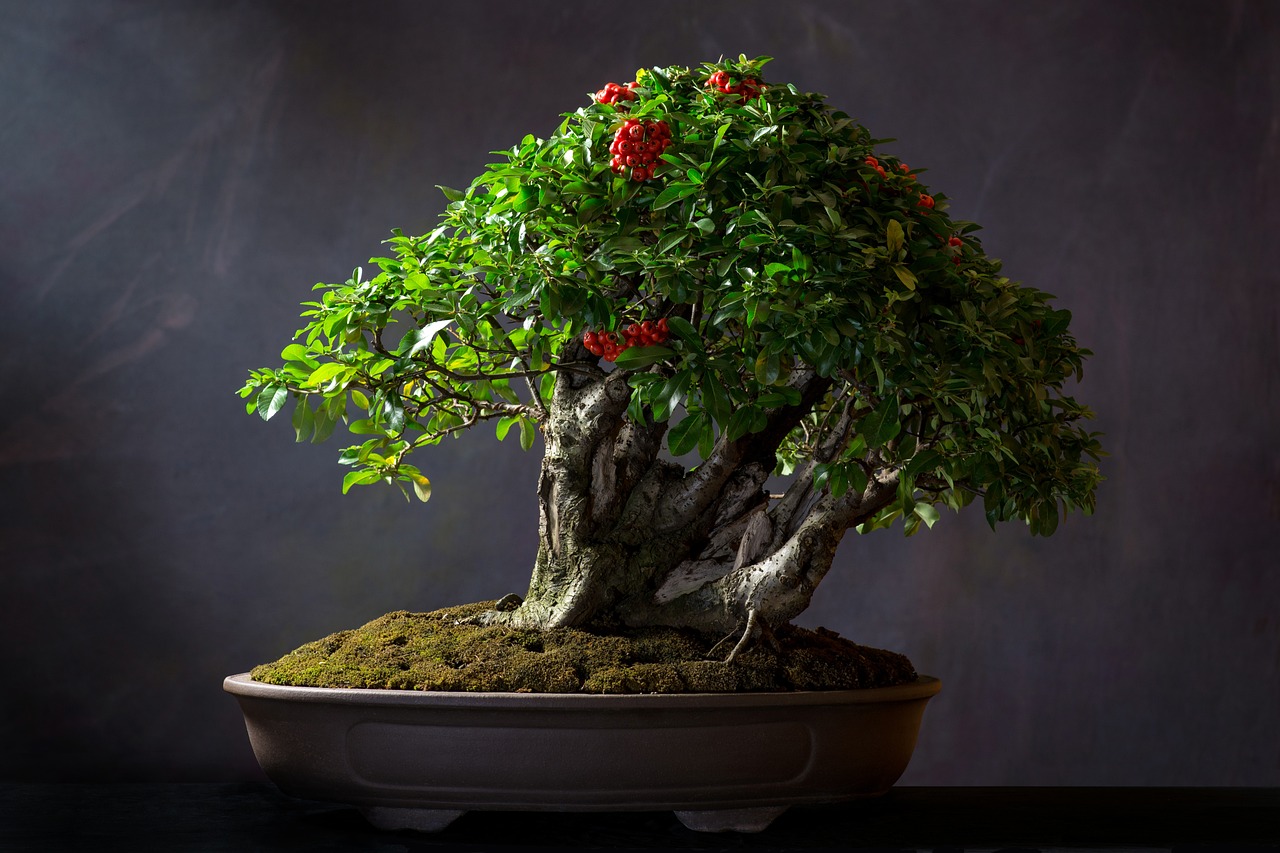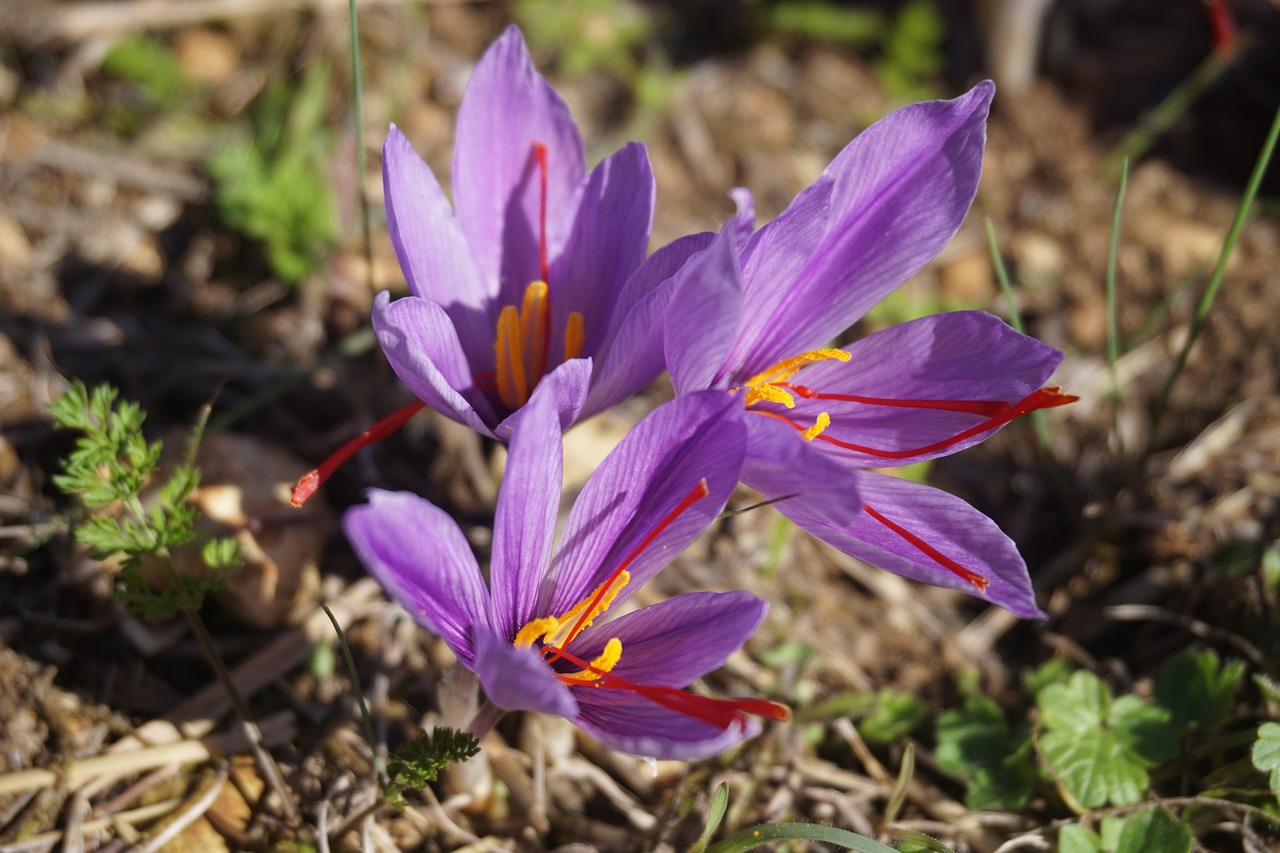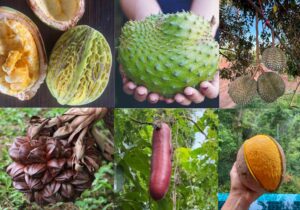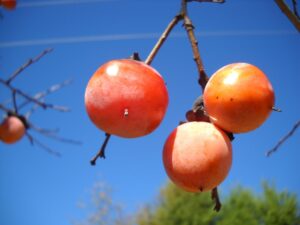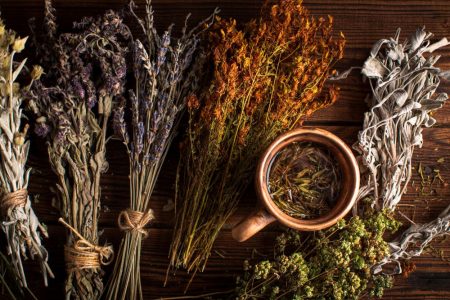 Pin
Pin Photo courtesy of Freepik
Now, I’ve spent a good portion of my life believing that if something works, somebody would’ve told me about it by now. Turns out, that’s not quite how the world operates. While we’ve been popping pills with names we can’t pronounce for ailments our grandparents never had, there’s been a whole pharmacy growing in the hills of India that most folks have never heard of. The funny thing about ancient medicine is that it’s had a few thousand years to work out the kinks, which is more than you can say for most things that come with a television commercial.
These 20 rare Ayurvedic herbs aren’t rare because they don’t work. They’re rare because they grow in particular spots, under particular conditions, and they’ve been the well-kept secrets of people who knew better than to go shouting about every remedy they discovered. What strikes me most about these plants is how specific they are in their effects. They don’t just throw a blanket over your symptoms and call it a day. They seem to know exactly where the trouble is and go right for it, like a good hunting dog that doesn’t waste time chasing rabbits when there’s a fox in the henhouse. If you’ve been running in circles trying to fix what’s bothering you, maybe it’s time to look at what’s been working all along, just quietly and without much fanfare.
⚠️ Important Health Disclaimer
The information presented in this article is for educational purposes only and is not intended to replace professional medical advice, diagnosis, or treatment. While these Ayurvedic herbs have been used traditionally for thousands of years, they are powerful botanical medicines that can interact with prescription medications, affect existing health conditions, and may not be appropriate for everyone, particularly pregnant women, nursing mothers, children, or people with specific medical conditions.
Before starting any new herbal regimen, you should always consult with a qualified healthcare provider who understands both your medical history and herbal medicine. This is especially critical if you’re currently taking prescription medications, have chronic health conditions, or are scheduled for surgery. A knowledgeable practitioner can help you determine appropriate dosages, identify potential interactions, and monitor your progress safely. What works wonderfully for one person might not be suitable for another, and professional guidance ensures you’re using these powerful herbs in a way that supports your health rather than compromising it.
Table of Contents
1. Brahmi (Bacopa monnieri) – The Memory Keeper
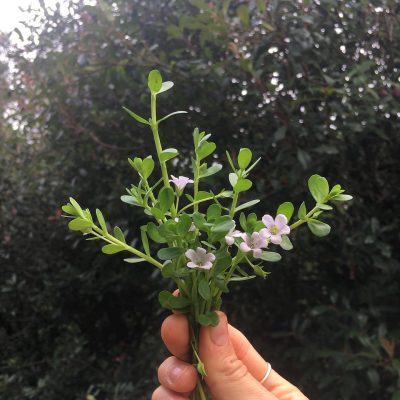 Pin
Pin Brahmi (Bacopa monnieri) – Photo courtesy of Yamuna Botanicals
Here’s a peculiar thing about getting older: you can remember the name of your third-grade teacher’s pet hamster, but you can’t recall why you walked into the kitchen. Brahmi, a creeping herb that grows in the wetlands of India, has been the go-to remedy for this sort of mental fog for about three thousand years. The ancient texts call it a “medhya rasayana,” which is a fancy way of saying it makes your brain work better, and modern science has finally caught up to confirm what Ayurvedic practitioners have known since before anyone was writing things down in a systematic way.
What makes Brahmi particularly interesting is how it works. It doesn’t just give you a temporary boost like caffeine does before it drops you like a hot potato. Instead, it actually seems to protect the brain cells themselves, helping them communicate better with each other. Studies show it improves the speed at which your brain processes information, which is useful whether you’re studying for an exam or just trying to remember where you left your reading glasses. The herb contains compounds called bacosides that strengthen the signals between neurons, sort of like upgrading from a dirt road to a paved highway. People who take it regularly report clearer thinking, better recall, and less of that anxious mental chatter that keeps you up at night worrying about things you can’t control anyway.
2. Guggul (Commiphora wightii) – The Cholesterol Wrangler
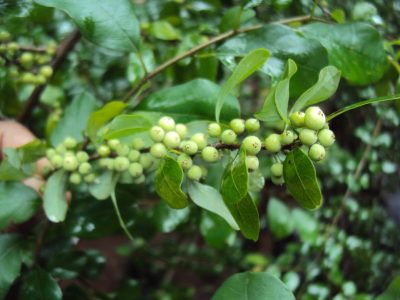 Pin
Pin Guggul (Commiphora wightii) – Photo courtesy of Wikimedia Commons
If you’ve ever seen a tree that looks like it’s been through a rough patch, that’s probably where you’ll find guggul. This scraggly thorny shrub grows in the arid parts of India, and when you cut into its bark, it weeps a yellowish resin that smells somewhere between pine and something you’d burn in a temple. The old Ayurvedic physicians noticed that this sticky sap had a particular talent for dealing with what they called “ama,” which is their word for the toxic sludge that builds up in your system when your body isn’t processing things properly. Turns out, they were talking about cholesterol and inflammation long before anyone had invented the words for them.
What’s remarkable about guggul is how it tackles the cholesterol problem from multiple angles at once. It doesn’t just lower the bad cholesterol, though it does that well enough. It also raises the good kind and helps your liver process fats more efficiently, which is the root of the issue to begin with. The active compounds, called guggulsterones, essentially tell your liver to speed up its fat-processing operation. Modern research backs this up with studies showing significant drops in LDL cholesterol and triglycerides after a few months of use. It also has a knack for cooling down inflammation in the joints, which is why folks with arthritis have been using it for centuries. The resin tastes bitter as sin, which is usually nature’s way of telling you something’s medicinal.
3. Shilajit – The Mountain Tar That Acts Like a Battery Charger
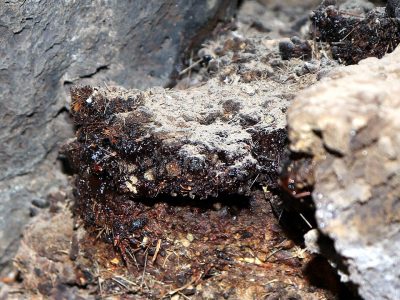 Pin
Pin Shilajit – Photo courtesy of Wikimedia Commons
Now, if you told someone you were taking a black, tar-like substance that oozes out of rocks in the Himalayas, they’d probably recommend you reconsider your life choices. But shilajit is one of those things that looks absolutely unappealing and works absolutely remarkably. It forms over centuries when plants decompose and get compressed between layers of rock at high altitudes, creating a mineral-rich resin that the mountain people have been scraping off cliffs and using as medicine since before recorded history. The name means “conqueror of mountains and destroyer of weakness,” which tells you pretty much everything about how they felt about its effects.
The reason shilajit works so well has to do with something called fulvic acid, which acts like a delivery truck for nutrients in your body. Your cells can have all the vitamins and minerals nearby that they need, but if those nutrients can’t get through the cell walls, you might as well be eating rocks. Fulvic acid solves this problem by carrying nutrients directly where they need to go and helping your mitochondria produce energy more efficiently. That’s why people who take it consistently report feeling less tired, recovering faster from exercise, and generally having more gas in the tank. It also contains over eighty minerals in ionic form, which means your body can actually use them. The taste is earthy and bitter, reminiscent of dirt mixed with something vaguely metallic, but then again, nobody ever said good medicine had to taste like candy.
4. Kutki (Picrorhiza kurroa) – The Liver's Best Friend
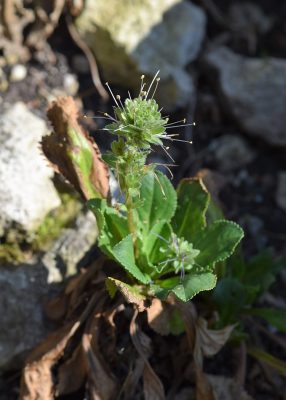 Pin
Pin Kutki (Picrorhiza kurroa) – Photo courtesy of Wikimedia Commons
Your liver is one of those organs that does about five hundred different jobs without ever complaining, until one day it does complain, and by then you’ve got a real problem on your hands. Kutki is a small perennial herb that grows at elevations so high in the Himalayas that most people would need an oxygen tank just to visit it. The root is what matters here, and it’s been the primary remedy for liver troubles in Ayurvedic medicine for longer than anyone can trace. The taste is intensely bitter, the kind that makes your whole face pucker up, which is exactly what alerts your digestive system that something medicinal is on its way.
What makes kutki special is its ability to protect liver cells from damage while simultaneously helping them regenerate. The active compounds, called kutkoside and picrosides, work like a repair crew and a shield at the same time. They boost the production of bile, which helps your liver flush out toxins more effectively, and they have a particular talent for calming down inflammation in the liver tissue itself. This makes it valuable not just for people with existing liver problems but also for anyone who wants to protect this hardworking organ from the daily assault of processed foods, environmental toxins, and the occasional indulgence that seems like a good idea at the time. Studies have shown it can help reverse early liver damage and improve overall liver function markers, which is about as close to a reset button as you’re going to find for an organ that doesn’t get enough appreciation.
5. Vidari Kand (Pueraria tuberosa) – The Strength Builder for Folks Who've Run Dry
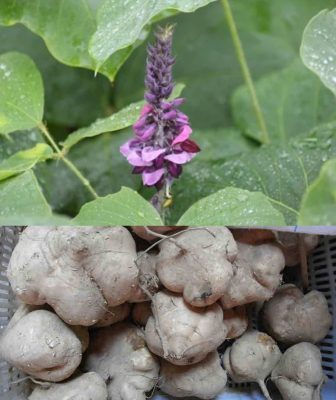 Pin
Pin Vidari Kand (Pueraria tuberosa) – Photo sources Internet
There’s a type of exhaustion that sleep doesn’t fix. You can rest for ten hours and still wake up feeling like you’ve been wrung out and hung up to dry. The old Ayurvedic doctors had a specific category for this condition, which they called a depletion of “ojas,” the vital essence that keeps everything running smoothly. Vidari kand is a tuberous root that grows wild in the Indian subcontinent, and it’s been the remedy of choice for this particular brand of deep-down tiredness for as long as anyone’s been keeping records. The root is sweet and starchy, which makes it one of the few Ayurvedic remedies that doesn’t taste like punishment, and it has a reputation for rebuilding strength in people who’ve burned through their reserves.
The way vidari kand works is by nourishing the body at a fundamental level, particularly the reproductive and nervous systems. It’s what they call a “rasayana,” meaning it rejuvenates tissues and promotes longevity rather than just treating symptoms. The root contains natural phytoestrogens and proteins that help balance hormones, which is why it’s particularly useful for women dealing with the upheaval of menopause or anyone recovering from chronic illness. It also has a cooling effect on the system, calming inflammation and supporting the kidneys, which are responsible for filtering out the daily accumulation of metabolic waste. People who use it regularly report better stamina, improved muscle tone, and a general sense that their body is cooperating with them again instead of fighting every step of the way.
6. Jatamansi (Nardostachys jatamansi) – The Nerve Soother That Grows Where Eagles Nest
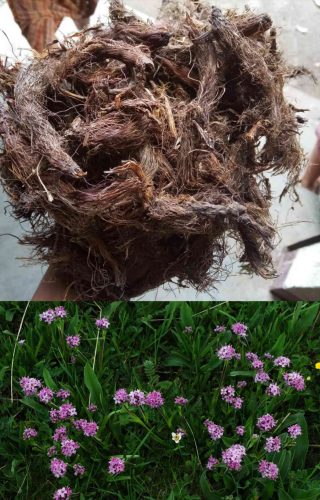 Pin
Pin Jatamansi (Nardostachys jatamansi) – Photo sources Internet
If you’ve ever laid awake at three in the morning with your mind racing through every mistake you’ve made since grade school, you understand why the ancients valued jatamansi so highly. This aromatic root grows at altitudes between eleven and seventeen thousand feet in the Himalayas, in places so remote that collecting it involves a fair bit of risk and determination. The plant belongs to the valerian family, but it’s considerably more refined in its effects than its European cousin. The root has a distinctive earthy, musky scent that’s been used in perfumes and incense for thousands of years, but its real value lies in what it does for an overstimulated nervous system that can’t find the off switch.
What sets jatamansi apart from other calming herbs is its ability to settle anxiety without turning your brain into mush. It doesn’t knock you out cold like some remedies do. Instead, it seems to turn down the volume on the constant mental chatter while leaving your ability to think clearly intact. The active compounds work on the same brain receptors that anxiety medications target, but without the dependency issues or the morning-after fog. It’s particularly effective for the kind of stress that manifests as physical tension, tight shoulders, clenched jaw, and that feeling like you’re carrying a backpack full of bricks. Regular use helps regulate sleep cycles naturally, calms digestive upset caused by nerves, and generally makes life feel less like you’re being chased by something you can’t see. The taste is bitter and pungent, which is tolerable when you consider what it does for your peace of mind.
7. Kapikacchu (Mucuna prurens) – The Velvet Bean That Fixes What Modern Life Breaks
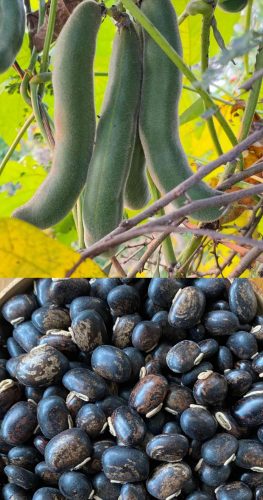 Pin
Pin Kapikacchu (Mucuna prurens) – – Photo sources Internet
There’s a curious plant that grows throughout India with seed pods covered in hairs that itch like the devil if you touch them, which seems like nature’s way of saying “handle with respect.” The seeds inside, though, are smooth as river stones and packed with something called L-dopa, which is the raw material your brain uses to make dopamine. Now, dopamine is that chemical messenger responsible for motivation, pleasure, focus, and the general feeling that life is worth getting out of bed for. Modern life has a habit of depleting it faster than your body can manufacture it, what with the constant stress, poor sleep, and screens that hijack your attention every waking moment.
The old Ayurvedic physicians didn’t know about dopamine by name, but they certainly recognized the symptoms of not having enough of it, which they treated with kapikacchu for centuries before neurochemistry was even invented.
What makes this bean particularly valuable is that it addresses the problem at its source rather than just masking symptoms. When you take L-dopa from kapikacchu, your brain can convert it directly into dopamine, which helps restore normal function to areas that control movement, mood, and cognition. This is why it’s been used traditionally for conditions that involve tremors, muscle rigidity, and that flat, joyless feeling that settles in when your neurochemistry is out of balance. Modern research confirms it can improve motor function, enhance mood, boost testosterone levels in men, and even improve sleep quality by supporting the natural production of growth hormone at night. The seeds need to be processed properly because the raw form contains some compounds that can cause digestive upset, but once prepared correctly, they’re one of the most effective natural remedies for rebuilding a depleted nervous system.
8. Haritaki (Terminalia chebula) – The King of Medicines That Cleans House
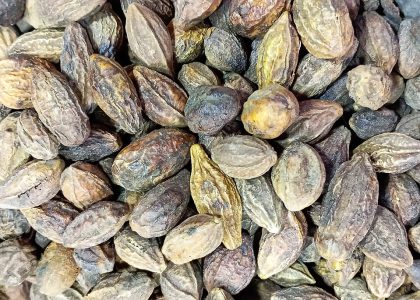 Pin
Pin Haritaki (Terminalia chebula) – Photo courtesy of Wikimedia Commons
There’s an old saying in Ayurvedic circles that a practitioner without haritaki is like a general without an army, which tells you something about how essential this plum-sized fruit has been to their system of healing. The fruit grows on a deciduous tree found across India and Southeast Asia, and it’s been called the “king of medicines” for its remarkable ability to address problems in just about every system of the body. The Tibetan medical tradition values it so highly that nearly every painting of the Medicine Buddha shows him holding a sprig of haritaki in his right hand. Now, that’s quite an endorsement from folks who’ve been studying healing for a few thousand years and presumably know a thing or two about what works.
The secret to haritaki’s effectiveness lies in its unique combination of five tastes, lacking only the salty one, which means it affects multiple systems simultaneously rather than targeting just one narrow issue. Its primary talent is as a gentle but thorough cleanser of the digestive tract, removing accumulated waste and toxins that slow everything down and create problems downstream. The tannins in the fruit have antibacterial and antiviral properties, while its antioxidants protect cells from damage throughout the body. Regular use improves digestion, regulates bowel movements without creating dependency, sharpens mental clarity, and strengthens the immune system’s ability to fend off whatever comes its way. People who take it consistently report better energy, clearer skin, and that general sense of things working the way they’re supposed to. The taste is astringent and slightly bitter, but considering it’s essentially giving your entire system a tune-up, that seems like a reasonable trade.
9. Shatavari (Asparagus racemosus) – The Root That Understands Women's Troubles
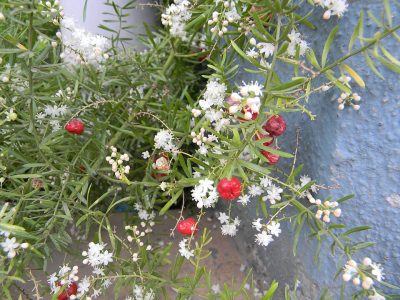 Pin
Pin Shatavari (Asparagus racemosus) – Photo courtesy of Wikimedia Commons
Now, here’s a plant that got its name from a bold claim: “she who possesses a hundred husbands,” which either refers to the root’s ability to give a woman the vitality to handle that situation, or more sensibly, its capacity to support female reproductive health through all its various seasons and challenges. Shatavari is a species of asparagus with delicate, pine-needle-like leaves and roots that look like a cluster of sweet potatoes hanging together. It grows wild across India, particularly in the rocky, gravelly soils of lower elevations, and it’s been the primary herb for women’s health in Ayurvedic medicine since the texts were first written down. But here’s something most folks don’t realize: while it’s celebrated for supporting women, it works just as well for men dealing with stress, digestive troubles, and the general wear and tear of getting older.
The way shatavari works in the body is quite elegant. It contains natural plant compounds called saponins that help balance hormones without forcing them in any particular direction, which is a gentler and smarter approach than trying to artificially boost or suppress specific hormones. This makes it valuable during menstruation, pregnancy, postpartum recovery, and menopause, essentially every stage where a woman’s hormones are doing complicated gymnastics. It also soothes and protects the mucous membranes throughout the body, which is why it helps with gastric ulcers, dry coughs, and inflammatory conditions of the urinary tract. The root has a sweet, slightly bitter taste and a cooling effect on the system, calming inflammation and replenishing fluids in people who’ve become dried out from stress, illness, or just the general dehydration of modern life. Regular use builds resilience and adaptability, helping the body handle whatever hormonal shifts or stresses come its way without falling apart at the seams.
10. Pippali (Piper longum) – The Pepper That Opens All the Doors
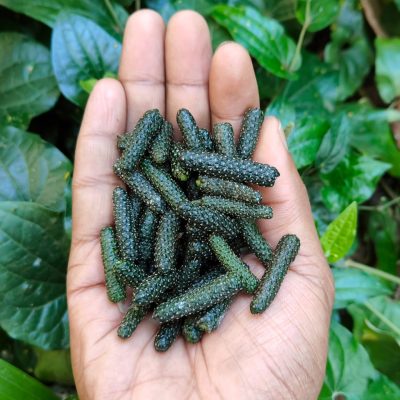 Pin
Pin Pippali (Piper longum) – Photo courtesy of Dr. Ananthakrishnan Ayurveda
Most people have never heard of pippali, which is a shame because it’s probably the most useful spice sitting in obscurity while its cousin black pepper gets all the attention. Long pepper, as it’s called in English, looks like a tiny pinecone and tastes sharp and pungent with a delayed heat that creeps up on you rather than hitting all at once. It grows on a flowering vine in the warmer regions of India, and the Ayurvedic practitioners discovered early on that this peculiar pepper had a talent that made every other remedy work better.
They call this quality “yogavahi,” meaning it’s a carrier that enhances the absorption and effectiveness of whatever you take it with, which makes it less of a standalone remedy and more of a force multiplier for everything else in the medicine chest.
The primary active compound in pippali is piperine, the same substance that gives black pepper its bite, but in higher concentrations and with additional alkaloids that work together in interesting ways. When you take piperine with other herbs or nutrients, it increases their bioavailability dramatically, sometimes by as much as two thousand percent for certain compounds. This happens because piperine temporarily inhibits certain enzymes in the liver and intestines that normally break down and eliminate substances before your body can fully absorb them. Beyond this enhancing effect, pippali itself is a powerful remedy for respiratory conditions, helping to clear congestion, calm coughs, and strengthen the lungs. It stimulates digestion without irritating the stomach lining, improves circulation, and has a warming effect that’s particularly useful for people who tend to run cold or have sluggish metabolism. The taste is intense but not unpleasant, and a little goes a long way, which is fortunate because you don’t need much to get the benefits.
11. Punarnava (Boerhavia diffusa) – The Plant That Brings You Back to Life
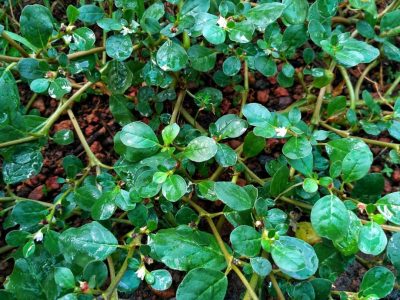 Pin
Pin Punarnava (Boerhavia diffusa) – Photo courtesy of Sreehariv
The name punarnava translates roughly to “that which makes things new again,” which is about as straightforward as botanical naming gets. This sprawling plant grows low to the ground with small leaves and tiny flowers that most people would walk right past without a second glance, but the root has been pulling people back from the edge of chronic illness for thousands of years. It thrives in the monsoon season across India, seeming to appear from nowhere after the rains come, which the old physicians took as a sign of its regenerative nature. The primary issue it addresses is fluid retention and kidney function, which might not sound dramatic until you understand that your kidneys filter about fifty gallons of blood every single day, and when they start falling behind on the job, everything else in your body begins to suffer.
What makes punarnava particularly valuable is its ability to support kidney function without forcing anything, working instead by gently increasing urine output and reducing inflammation in the urinary tract. This helps clear out excess fluid that accumulates in tissues, which is why it’s traditionally used for swelling in the legs, puffy eyes, and that bloated feeling that makes your clothes fit wrong. The root contains alkaloids and flavonoids that protect kidney cells from damage and improve their filtering capacity, essentially helping these hardworking organs do their job more efficiently. It also supports liver function and has a mild diuretic effect without depleting the body of essential minerals the way pharmaceutical diuretics often do. People with recurring urinary tract issues, sluggish kidneys, or general puffiness from poor fluid metabolism find it remarkably effective. The taste is slightly bitter and astringent, which signals the body that something cleansing is happening, and regular use helps restore that light, clear feeling that comes when your system is draining properly and not holding onto what it should be letting go.
12. Ashoka (Saraca asoca) – The Tree That Removes Sorrow from Women's Lives
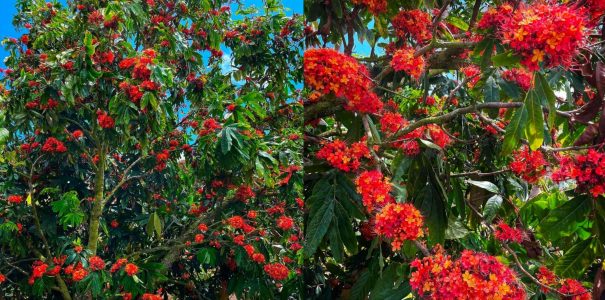 Pin
Pin Ashoka (Saraca asoca) – Photo courtesy of Dan Corson
There’s a tree that grows in the central regions of India with bark so valued for women’s health that its very name means “without sorrow,” and that’s not the kind of name you give something unless it’s earned the reputation over considerable time. The ashoka tree produces clusters of orange-red flowers that are sacred in Hindu and Buddhist traditions, but it’s the bark that holds the medicinal properties. For centuries, Ayurvedic physicians have used this bark specifically for menstrual disorders, and the interesting thing is that modern research has confirmed what traditional use always suggested: the bark contains compounds that have a direct regulatory effect on the uterine muscles and the endometrium, the lining that sheds during menstruation.
The way ashoka bark works is quite specific to the female reproductive system. It contains tannins, flavonoids, and sterols that help regulate menstrual cycles, reduce excessive bleeding, and calm the painful cramping that can make a few days each month absolutely miserable. Unlike general pain relievers that just mask symptoms, ashoka actually addresses the underlying issue by toning the uterine muscles and balancing the hormones that control the menstrual cycle. Women who experience heavy periods, irregular cycles, or severe cramping often find relief within a few months of regular use. The bark also has mild estrogenic properties, which makes it useful during the transition to menopause when estrogen levels start fluctuating wildly. It’s prepared as a decoction, which means you simmer the bark in water until it reduces down to a concentrated liquid. The taste is astringent and earthy, similar to strong tea, and it’s one of those remedies that women pass down through generations because it actually delivers on its promise to make a difficult time considerably more bearable.
13. Bala (Sida cordifolia) – The Strength Giver for Muscles and Nerves
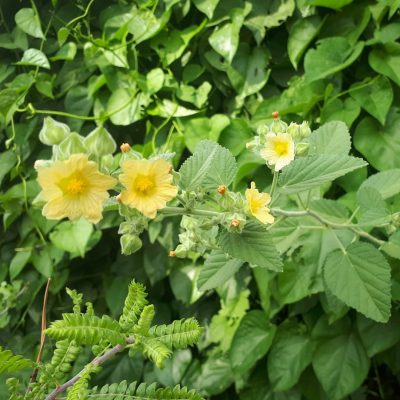 Pin
Pin Bala (Sida cordifolia) – Photo courtesy of Tomer Rapaport
If you’ve ever watched someone recover from a long illness or injury, you’ve probably noticed how the body seems to forget how to be strong. The muscles waste away faster than seems reasonable, and getting them back takes considerably more effort than losing them did in the first place. Bala, which translates simply to “strength,” is a small shrubby plant with heart-shaped leaves and yellow flowers that grows throughout India in disturbed soils and along roadsides. The Ayurvedic physicians classified it as one of the most important rejuvenating herbs for the muscular and nervous systems, and they used it specifically for conditions involving weakness, wasting, and the kind of nervous exhaustion that leaves you feeling shaky and depleted.
The root and the whole plant contain alkaloids, particularly one called ephedrine in small amounts, along with other compounds that have a toning and strengthening effect on muscle tissue. What makes bala particularly interesting is that it works on both voluntary muscles, the ones you control consciously, and the smooth muscles that line your blood vessels and organs. This dual action means it helps rebuild strength after illness while also supporting cardiovascular function and improving circulation. It’s traditionally given to elderly people who are losing muscle mass, athletes recovering from injuries, and anyone dealing with neurological conditions that cause muscle weakness or tremors. The herb has a nourishing, building quality rather than a stimulating one, meaning it actually helps repair and strengthen tissues over time rather than just giving you a temporary boost. The taste is slightly sweet and mucilaginous, coating the throat as it goes down, which is soothing for people with chronic coughs or irritated respiratory passages. Regular use over several months can restore muscle tone, improve stamina, and bring back that feeling of physical capability that makes daily activities feel manageable rather than exhausting.
14. Arjuna (Terminalia arjuna) – The Warrior Bark That Guards Your Heart
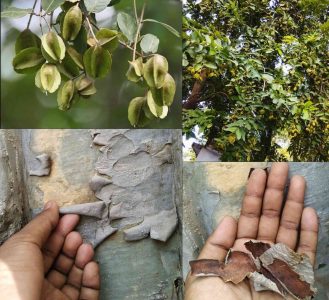 Pin
Pin Arjuna (Terminalia arjuna) – Photo from Internet
Your heart beats about a hundred thousand times a day without you giving it a second thought, and it’s only when something goes wrong that you realize how much you’ve been taking for granted. Arjuna is a tall, majestic tree that grows along riverbanks throughout India, reaching heights of eighty feet with a thick trunk covered in smooth gray bark that peels off in thin sheets. The ancient warrior Arjuna from the Mahabharata epic lends his name to this tree, and that’s fitting because this bark has been protecting hearts with the dedication of a warrior for at least three thousand years. The Ayurvedic texts describe it as the primary remedy for heart disease, and what’s remarkable is that modern cardiology has confirmed pretty much everything those ancient physicians observed just by watching their patients improve.
The bark contains a unique combination of compounds including tannins, saponins, and flavonoids that work together to strengthen the heart muscle, regulate blood pressure, and protect the cardiovascular system from oxidative damage. What arjuna does is essentially make the heart more efficient at its job. It improves the pumping action without increasing the heart rate, which means your heart can do the same amount of work with less effort and less wear and tear. This is particularly valuable for people with congestive heart failure, where the heart is struggling to pump enough blood to meet the body’s needs. Studies have shown that arjuna can improve exercise tolerance, reduce chest pain from angina, and lower cholesterol levels, all while being gentle enough for long-term use. The bark also has a mild diuretic effect that helps reduce fluid retention, taking some of the pressure off an overworked cardiovascular system. You prepare it by boiling the bark powder in water or milk, and the taste is astringent and slightly bitter, but that seems like a small price to pay for something that might add years to your life by keeping your most important muscle working the way it should.
15. Yashtimadhu (Glycyrrhiza glabra) – The Sweet Root That Heals Without the Harshness
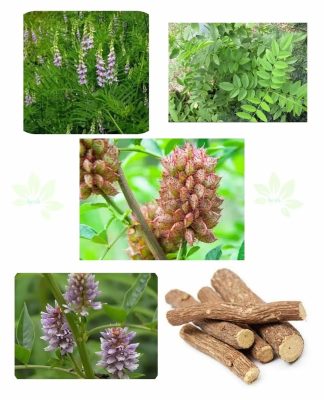 Pin
Pin Yashtimadhu (Glycyrrhiza glabra) – Photo courtesy of ayur__veda
Most medicines taste terrible, which seems to be the universe’s way of reminding you that healing rarely comes easy. Yashtimadhu breaks that rule entirely. This root, known as licorice in the West, tastes sweeter than sugar, about fifty times sweeter in fact, and yet it’s been one of the most prescribed remedies in Ayurvedic medicine for conditions ranging from stomach ulcers to sore throats. The plant grows as a legume with purple flowers, but the real treasure lies underground in roots that can reach three feet deep, pulling up minerals and compounds from soil layers most plants never touch.
The Ayurvedic doctors recognized early on that this root had a peculiar ability to soothe inflammation anywhere it encountered it, from the throat down through the entire digestive tract, and they used it as a base ingredient in countless formulations because it harmonized the effects of other herbs while adding its own considerable benefits.
The active compound, glycyrrhizin, is what gives the root its sweetness and its healing properties. This substance has a molecular structure similar to the corticosteroid hormones your body produces to control inflammation, which explains why it works so effectively for inflammatory conditions without the harsh side effects of pharmaceutical steroids. Yashtimadhu coats and protects mucous membranes, making it invaluable for healing gastric ulcers, reducing acid reflux, and soothing inflamed airways in the lungs. It also supports adrenal function, which is particularly useful for people whose stress response has been overtaxed to the point of exhaustion. The root helps regulate cortisol production, bringing it back to healthy levels rather than suppressing it entirely. For respiratory conditions like bronchitis or persistent coughs, it acts as both an expectorant and a demulcent, helping to loosen mucus while coating and protecting irritated tissues. The one caution with yashtimadhu is that extended use in high doses can affect potassium levels and blood pressure, so it’s best used in moderate amounts or under guidance, but for short-term relief of acute conditions or as part of a balanced formula, it’s one of the gentlest and most effective anti-inflammatory herbs available.
16. Manjistha (Rubia cordifolia) – The Blood Purifier That Works From the Inside Out
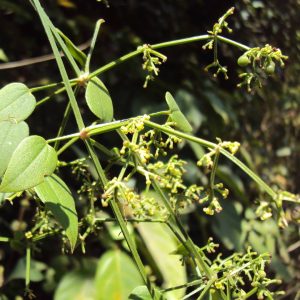 Pin
Pin Manjistha (Rubia cordifolia) – Photo courtesy of Wikimedia Commons
Now, the old Ayurvedic physicians had this notion of blood that needed cleaning, which sounds a bit medieval until you understand what they were actually talking about. They weren’t suggesting the blood itself was dirty in some literal sense, but rather that it was carrying metabolic waste products and inflammatory compounds that hadn’t been properly filtered out and eliminated. Manjistha is a climbing plant with small yellowish flowers and roots that yield a deep red dye that’s been used for thousands of years to color fabrics, but more importantly, to address what they called “rakta dosha,” or disorders of the blood. The root grows throughout the Himalayan region and has been the primary remedy for skin conditions, particularly the stubborn, chronic ones that resist every other treatment and seem to come from somewhere deep inside the body rather than from external causes.
What makes manjistha effective is its ability to support the body’s natural detoxification systems, particularly the liver and lymphatic system, which are responsible for filtering and removing waste products from the bloodstream. The root contains compounds called anthraquinones that stimulate lymphatic drainage, helping to clear out stagnant fluid and accumulated toxins that can manifest as acne, eczema, psoriasis, and other inflammatory skin conditions. The connection between internal toxicity and external skin problems is something modern dermatology is only now beginning to appreciate, but Ayurvedic medicine has been addressing it from this angle for millennia. Manjistha also breaks down abnormal clots and helps regulate menstruation by improving blood flow through the pelvic region, which is why it’s traditionally used for painful periods and conditions like endometriosis. The root has a cooling, anti-inflammatory effect throughout the body, and people who use it consistently often notice their skin becoming clearer, their complexion more even, and chronic inflammatory conditions gradually settling down. The taste is bitter and astringent, which tells you it’s working on cleaning things out, and it colors the urine reddish-orange, which can be startling if you’re not expecting it but is perfectly harmless and actually a sign that the herb is doing its job.
17. Gokshura (Tribulus terrestris) – The Little Thorn That Unlocks Vitality
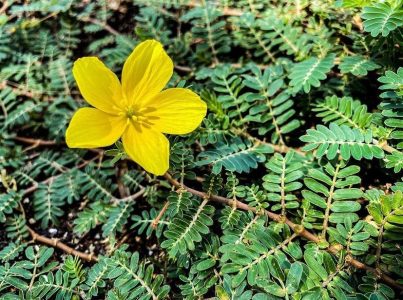 Pin
Pin Gokshura (Tribulus terrestris) – Photo courtesy of Healing Elements Ayurveda
There’s a low-growing plant with vicious little thorns on its seed pods that can puncture a bicycle tire, and yet those same seeds have been restoring vitality to worn-out bodies for thousands of years. Gokshura grows in arid regions across India, thriving in conditions that would kill most plants, which perhaps explains why it’s so effective at helping the human body survive and thrive under difficult circumstances. The name means “cow’s hoof,” referring to the shape of the seed pods, and while those thorns make it a nuisance to farmers and barefoot travelers, the seeds inside have earned gokshura a reputation as one of the most effective rejuvenating herbs for the urinary and reproductive systems.
The way gokshura works is by supporting kidney function and improving the flow of fluids through the urinary tract, which has downstream effects on everything from blood pressure to energy levels. The seeds contain steroidal saponins, particularly one called protodioscin, that seem to signal the body to produce more of its own natural hormones rather than introducing synthetic ones from outside. This makes it valuable for men dealing with declining testosterone levels, loss of libido, or poor athletic performance, and for women experiencing low energy or difficulty with fertility. What’s particularly interesting is that gokshura doesn’t force hormone production artificially but rather supports the body’s natural ability to maintain optimal levels. It also acts as a mild diuretic, helping to flush out kidney stones, reduce urinary tract infections, and relieve that uncomfortable retention of fluid that makes you feel heavy and sluggish. Athletes have used it for centuries to improve strength and endurance, and modern research suggests it may help the body recover faster from intense physical exertion by reducing muscle damage and inflammation. The seeds have a cooling effect despite their stimulating properties, and the taste is slightly sweet and mucilaginous, making them easier to take than many other Ayurvedic herbs that punish your taste buds for trying to get healthy.
18. Kalmegh (Andrographis paniculata) – The Bitter Defender Against Every Bug That Comes Knocking
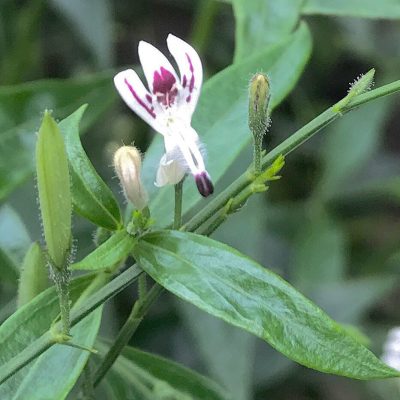 Pin
Pin Kalmegh (Andrographis paniculata) – Photo courtesy of Thomas (Instagram)
If there were a contest for the most bitter substance on earth that people willingly consume, kalmegh would be a strong contender for the championship. This herb is so intensely bitter that its common name translates to “king of bitters,” and sampling even a tiny amount will have your entire face puckering up in protest. The plant grows throughout India with small white flowers marked with purple spots, looking quite innocent and pretty until you taste it. But here’s the thing about that bitterness: it’s directly related to the compounds that make kalmegh one of the most powerful natural antivirals and antibacterials in the Ayurvedic arsenal, and those compounds have been knocking out infections of all varieties for longer than modern antibiotics have existed.
The active constituent, andrographolide, works by stimulating your immune system to mount a more effective defense against invading pathogens while simultaneously interfering with the ability of viruses and bacteria to replicate inside your cells. This dual action makes it particularly effective for respiratory infections, the kind that start with a scratchy throat and threaten to settle into your chest for the duration of winter. Studies have shown that taking kalmegh at the first sign of a cold can reduce both the severity and duration of symptoms significantly, sometimes cutting a week-long illness down to just a few days of mild discomfort. It’s also been used traditionally for digestive infections, skin conditions caused by bacteria, and fever of unknown origin. What makes it especially valuable in our current age is that bacteria don’t seem to develop resistance to it the way they do with pharmaceutical antibiotics, probably because it works through multiple mechanisms rather than a single targetable pathway. The liver also benefits from kalmegh’s protective effects, as the herb helps shield liver cells from toxins and supports the organ’s natural detoxification processes. The bitterness is genuinely challenging to get past, which is why it’s often taken in capsule form or mixed with honey, but for people who get sick frequently or have stubborn infections that won’t clear, that bitter taste becomes a small price to pay for getting their health back.
19. Triphala – The Three-Fruit Formula That Resets Your Entire System
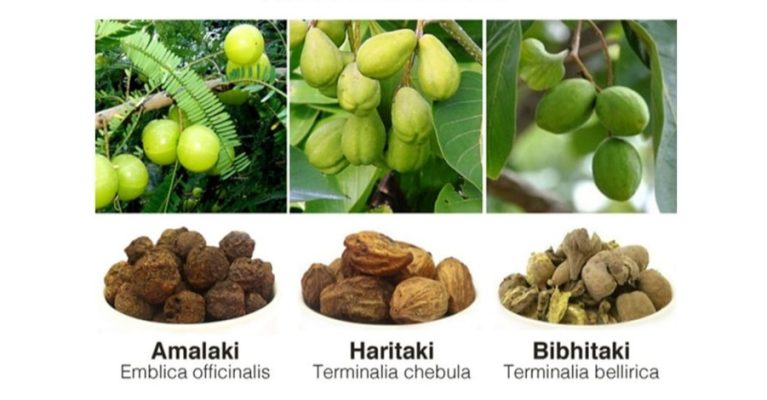 Pin
Pin Triphala – Photo courtesy of Rudraksha Ayurveda
Now, triphala isn’t technically a single herb but rather a combination of three fruits that work together so brilliantly that separating them would be like trying to improve on a perfectly balanced recipe by removing ingredients. The formula combines amalaki, bibhitaki, and haritaki in equal proportions, and it’s been the cornerstone of Ayurvedic preventive medicine for so long that finding its origin is like trying to figure out who first decided to cook food over fire. Each fruit brings its own particular strengths to the table, and when you combine them, something remarkable happens: the whole becomes considerably greater than the sum of its parts, creating a formula that seems to know exactly what your body needs and delivers it without any fuss or drama.
What makes triphala so universally useful is that it works on all three doshas, the fundamental energetic principles that Ayurveda says govern bodily function, which in practical terms means it benefits just about everyone regardless of their constitution or specific imbalances. Amalaki is cooling and rich in vitamin C, protecting cells from oxidative damage and supporting immune function. Bibhitaki works primarily on the respiratory and digestive systems, clearing out accumulated mucus and toxins. Haritaki, which we covered earlier, acts as a gentle but thorough cleanser of the entire digestive tract. Together, they regulate bowel movements without creating dependency the way laxatives do, improve nutrient absorption, support healthy vision, strengthen the immune system, and provide powerful antioxidant protection throughout the body. People who take triphala regularly, usually a teaspoon of powder mixed in warm water before bed, report better digestion, clearer thinking, more energy, and that general sense that their body is functioning the way it was designed to rather than constantly struggling against itself. The taste combines all the flavors except salty, which makes it complex and not entirely pleasant, but most folks get used to it quickly enough when they notice how much better they feel. It’s one of those rare formulas that you can take indefinitely for general health maintenance, and many Ayurvedic practitioners consider it the single most important preparation in their entire system of medicine.
20. Guduchi (Tinospora cordifolia) – The Immortal Climber That Teaches Your Immune System to Think Straight
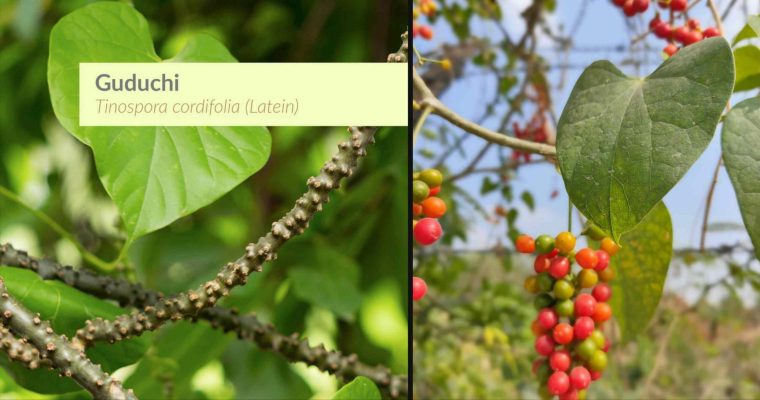 Pin
Pin Guduchi (Tinospora cordifolia) – Photo sources Internet
There’s a woody climbing vine that grows throughout India, wrapping itself around trees and sending down roots from its branches that look like threads hanging in the air, and the ancient physicians called it “amrita,” which means immortal or divine nectar. Now, that’s quite a claim to make about a plant, but guduchi has earned that name through its remarkable ability to strengthen the immune system in a way that’s more intelligent than what you typically see from immune-boosting remedies. Most things that stimulate the immune system do it indiscriminately, ramping up all responses whether they’re helpful or not, which can be problematic for people whose immune systems are already confused and attacking things they shouldn’t. Guduchi works differently. It seems to educate the immune system, teaching it to recognize real threats while calming down the inappropriate responses that cause allergies and autoimmune conditions.
The stem is what’s used medicinally, and it contains a complex mix of alkaloids, glycosides, and polysaccharides that work together to modulate immune function rather than simply stimulating it. This makes guduchi valuable for people with chronic infections who need stronger defenses, but equally useful for those with overactive immune systems that are causing inflammation, allergies, or autoimmune reactions. The herb increases the production and activity of white blood cells when they’re needed to fight infections, but it also reduces inflammatory cytokines that cause tissue damage when the immune system is attacking inappropriately. Traditional use includes everything from recurring fevers and chronic infections to rheumatoid arthritis and inflammatory skin conditions. What’s particularly interesting is how it protects the liver while supporting immune function, which is important because many immune conditions require medications that are hard on the liver over time. People who take guduchi regularly often report fewer infections, less severe allergic reactions, reduced joint pain from inflammatory conditions, and an overall sense of resilience that comes from having an immune system that knows how to respond appropriately to challenges. The fresh stem is bitter with a post-digestive sweet taste that develops after you’ve swallowed it, and while the dried powder is more convenient, the fresh juice is considered more potent for acute conditions. It’s one of those herbs that doesn’t produce dramatic immediate effects but builds health steadily over time, which is exactly what you want from something you’re taking to extend and improve the quality of your life.
⚠️ Important Health Disclaimer
The information presented in this article is for educational purposes only and is not intended to replace professional medical advice, diagnosis, or treatment. While these Ayurvedic herbs have been used traditionally for thousands of years, they are powerful botanical medicines that can interact with prescription medications, affect existing health conditions, and may not be appropriate for everyone, particularly pregnant women, nursing mothers, children, or people with specific medical conditions.
Before starting any new herbal regimen, you should always consult with a qualified healthcare provider who understands both your medical history and herbal medicine. This is especially critical if you’re currently taking prescription medications, have chronic health conditions, or are scheduled for surgery. A knowledgeable practitioner can help you determine appropriate dosages, identify potential interactions, and monitor your progress safely. What works wonderfully for one person might not be suitable for another, and professional guidance ensures you’re using these powerful herbs in a way that supports your health rather than compromising it.
FAQs
Most Ayurvedic herbs work on a building principle rather than providing instant relief. You might notice subtle shifts within two to three weeks, but the real benefits usually show up after consistent use for two to three months. These aren’t quick fixes but rather deep healers that address root causes instead of just symptoms.
Many of these herbs actually work better in combination, which is why traditional formulas like triphala exist. However, start with one herb at a time so you can notice how your body responds. Once you understand each herb individually, combining them under proper guidance becomes safer and more effective.
Some herbs like triphala and guduchi are considered safe for long-term daily use, while others like guggul or kalmegh work best for shorter periods targeting specific issues. The general rule is that rejuvenating herbs can be taken continuously, while more targeted medicinal herbs should be used for specific durations with breaks in between.
Quality matters enormously with Ayurvedic herbs. Look for suppliers who provide organic certification, test for heavy metals, and source directly from traditional growing regions in India. Reputable Ayurvedic pharmacies and companies that specialize in traditional formulations are your best bet over generic supplement retailers.
Several of these herbs can interact with common medications, particularly blood thinners, diabetes drugs, and blood pressure medications. Some herbs affect how your liver processes pharmaceuticals, which can make your medications either more or less effective. This is precisely why consulting with a healthcare provider before starting is absolutely essential.



